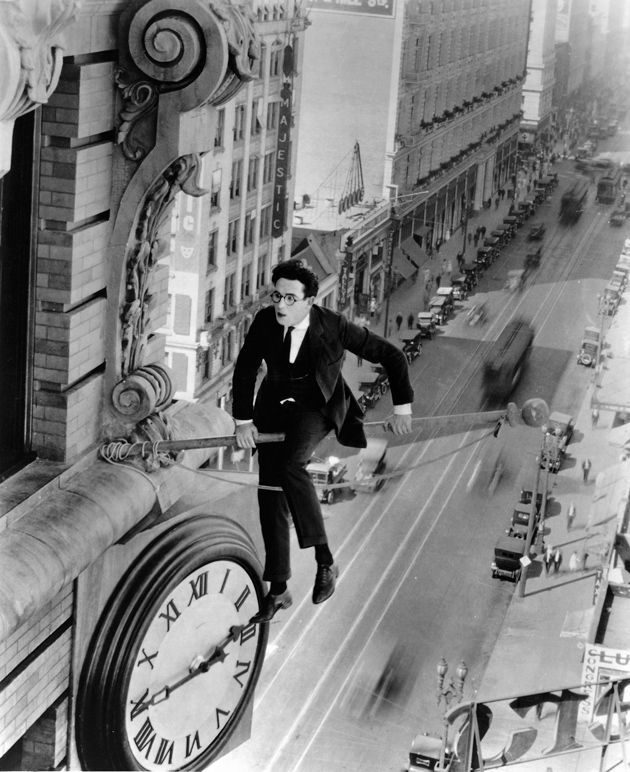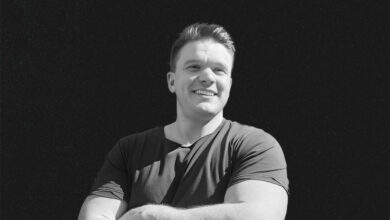Killing Orson Welles at Midnight (2011)

It’s two in the afternoon. No one is groaning; no one turns over in bed or hits an alarm clock—it’s much too late for that. Love set you going like a fat gold watch.… But by two o’clock the morning song is just a memory. We are no longer speculating as to what set us going, we just know we are going. We are less sentimental in the afternoon. We watch the minute hand go round: 2:01 becoming 2:02 becoming 2:03. It’s relentless, when you think about it. Mostly we don’t think about it. We’re very busy, what with everything that’s going on. The foreign schoolchildren have already left for the day, a burly gentleman is having his tea in a glass, Billy Liar is being asked “What time d’yer call this?” (seventeen minutes past two), and Charlotte Rampling is all by herself eating chocolate éclairs and smoking, in a garden somewhere, in France, probably.
There’s no slowing it down and no turning back: the day is too far along to be denied. Though some will try, some always do. At two o’clock precisely a man screams at a grandfather clock (“That’ll be enough of that!”) and smashes it to pieces. But the day continues. It always does. The Japanese—a pragmatic people, a realistic people—deal with the situation by having a meeting at a long white conference table. Faced with the same reality, we in the West tend to opt for a stiff drink instead. But people will insist upon shooting us sideways glances and saying things like “It’s two o’clock in the afternoon!” and so we put down our glasses and sigh. The afternoon—free from the blur of hangover or the fug of sleep—is when our shared predicament on this planet becomes clear.
Coincidentally, the afternoon is also the time when many people will first go to see Christian Marclay’s The Clock. Not too early, just after lunch. After all, it may be good, it may be bad—you don’t want to lose a whole morning over it. But very soon, sooner than you could have imagined—in fact at exactly 2:06, as Adam Sandler patronizes a Spanish girl—you realize that The Clock is neither bad nor good, but sublime, maybe the greatest film you have ever seen, and you will need to come back in the morning, in the evening, and late at night, abandoning everything else, packing a sleeping bag, and decamping to the Paula Cooper Gallery until sunrise. Except: Christ, is that the time? Oh well. Come back tomorrow.
The things you notice on a second visit are quite small but feel necessary for orientation, like drawing an x and y axis before attempting to plot a great mass of information on a graph. In my notebook I tried to state the obvious, to get it clear in my own mind. The Clock is a twenty-four-hour movie that tells the time. This is achieved by editing together clips of movies in which clocks appear. But The Clock is so monumental in intention and design that even the simplest things you can say about it need qualification. There isn’t, for example, a clock visible in every scene. Sometimes people will only mention the time, or even just speak of time as a general concept. Mary Poppins does less than that; she glances at her wristwatch, the face of which we cannot see, then opens her umbrella and flies, to be replaced, a moment later, by a man, also flying with an umbrella, who soon floats past a clock tower, thus revealing the time. There are many moments like this, and when you first notice them their synchronicity and beauty are a little unnerving. They reveal a creative constraint even larger and more demanding than the one you had assumed. If The Clock cares to match a flying umbrella with a flying umbrella, it must have aesthetic currents passing beneath its main flow, moving in a variety of directions, not simply clockwise.
You sit in the dark, trying to figure out la règle du jeu. Clearly there are two types of time, real and staged. There are a few ways to say that. Accidental clocks versus deliberate clocks. Time that has been caught on film versus time that has been manipulated for film. It turns out that accidental clocks are more poignant than deliberate clocks. The actors in the street valiantly approximate reality, but the clock tower behind them has captured reality, a genuine moment in time, now passed forever, unrecoverable, yet reanimated by film. It really was 3:22. 3:22 would have happened, whether it was filmed or not, and consequently this moment feels unvarnished, unmanipulated, true. By contrast, staged time obeys certain conventions. Afternoon sex is the sexiest, probably because it often involves prostitutes. Between four and five o’clock transport is significant: trains, cars, and airplanes. If the phone rings after one in the morning do not expect good news. Cuckoo clocks, no matter when they chime, are almost always ominous. When Orson Welles says what time it is, it lends the hour an epic sound. At two AM everyone’s lonely.
A few clips are anticipated and people applaud when they arrive. Christopher Walken in Pulp Fiction with Butch’s father’s watch up his ass. Big Ben exploding. These are meta-clips, because their clocks were already notorious. Embedded in The Clock, all kinds of run-of-the-mill cinematic moments become profound or comic or both. A comment as innocuous as “I just don’t have the time” reduces the audience to giggles. Very unlikely people become philosophers. Owen Wilson, speaking to himself: “You’re about to die. You’re on the minute hand of a clock.” Marisa Tomei, in a rowboat: “Time is a relative thing…an emotional thing!”
Other tendencies are more obscure and may be your own solitary delusion. Watching The Clock is a trancelike experience, almost hallucinogenic: you’re liable to see things that aren’t there. For instance, isn’t it the case that the charm of certain actors is so overwhelming that they seem to step out of the time of the concept? To operate outside it? When Paul Newman lifts his foot onto the bed and ties his shoe and smiles, you find you are no longer waiting for the next clock. You settle in to watch a Paul Newman movie. And when the inevitable cut comes, a sigh passes through the gallery. Is that what people mean when they speak of “star quality”? The ability to exist outside of time? (This side effect happened rarely, and didn’t seem connected to relative fame. Nobody sighed when Tom Cruise came and went.) Repetitions occur, and appear to be meaningful. If we see a lot of James Bond and Columbo it is because time, staged time, is their natural milieu. Fake clocks drive their narrative worlds: countdowns and alibis, crime scenes. This may also account for the frequency of Denzel Washington.
The Clock makes you realize how finely attuned you are to the rhythms of commercial (usually American) film. Each foreign clip is spotted at once, long before the actor opens his mouth. And it’s not the film stock or even the mustaches that give the game away, it’s the variant manipulation of time, primarily its slowness, although of course this “slowness” is only the pace of real time. In commercial film, decades pass in a minute, or a day lasts two and half hours. We flash back, we flash forward. There’s always a certain pep. “Making lunch” is a shot of an open fridge, then a chopping board, then food cooked on the stove. A plane ride is check-in, a cocktail, then customs. Principles dear to Denzel—tension, climax, resolution—are immanent in all the American clips, while their absence is obvious in the merest snatch of French art house. A parsing of the common enough phrase “I don’t like foreign movies” might be “I don’t want to sit in a cinema and feel time pass.”
Given that nobody has given you the rules—given that you have imagined the rules—how can you be indignant when these rules of yours are “broken”? But somehow you are. If Christian Marclay returns to the same film several times—a long “countdown” scene, say, from some bad thriller—it feels like cheating. And because you have decided that the sharp “cut” is the ruling principle of the piece, you’re at first unsure about music bleeding from one scene into another. But stay a few hours and these supposed deviations become the main event. You start to find that two separated clips from the same scene behave like semicolons, bracketing the visual sentence in between, bringing shape and style to what we imagined would have to be (given the ordering principle of the work) necessarily random. Marclay manages to deliver connections at once so lovely and so unlikely that you can’t really see how they were managed: you have to chalk it up to blessed serendipity. Guns in one film meet guns in another, and kisses, kisses; drivers in color wave through drivers in black-and-white so they might overtake them.
And still The Clock keeps perfect time. And speaks of time. By mixing the sound so artfully across visual boundaries (Marclay’s previous work is primarily in sound), The Clock endows each clip with something like perdurance, extending it in time, like a four-dimensional object. As far as the philosophy of time goes, Marclay’s with Heraclitus rather than Parmenides: the present reaches into the future, the past decays in the present. It’s all about the sound. The more frequently you visit The Clock the more tempted you are to watch it with your eyes closed. Is that the Sex Pistols leaking into the can-can? Nostalgia is continually aroused and teased; you miss clips the moment they’re gone, and cling to the aural afterglow of what has passed even as you focus on what is coming, what keeps coming.
So far The Clock has had few opportunities to play to audiences for its full twenty-four hours, but whenever it has the queues have been almost as long as the film itself. Naturally everyone wants to see midnight. “Why does it always happen at midnight?” asks a young man by a fireplace, underneath a carriage clock. “Because it does!” replies his friend. In the run-up, only Juliette Binoche in France is able to remain calm: quietly, foxily, ironing a bag of laundry, while wearing a bra-less T-shirt. In America everyone’s going crazy. Both Bette Davis and Joan Crawford start building to climaxes of divadom early, at around a quarter to the hour. Jaws going, eyeballs rolling. At ten to midnight Farley Granger looks utterly haunted, though I suppose he always looked that way. At three minutes to midnight people start demanding stays of execution: “I want to speak to the governor!” And the violins start, those rising violins, slashing at their strings, playing on our midnight angst.
This works up into a joke: Marclay can cut seamlessly through dozens of films for the last two minutes without manipulating the sound at all: they all have the same screeching violins, the only difference is the key. At midnight a zombie woman pops out of a grandfather clock and gets a big laugh, but I preferred the clip that came a moment later, when a twelve-foot clockwork soldier, swinging out of a bell tower to mark the hour, impales Orson Welles on his giant sword. It reminded me of Owen Wilson’s memento mori: You’re about to die. You’re on the minute hand of a clock.
Thirst, Taxi Driver, The X-Files, a lot of Kurosawa, Fatal Attraction, The Prime of Miss Jean Brodie, some Woody Allen, a little Bergman—Marclay’s sources will be very familiar to his New York and London audiences. Maybe if The Clock had been drawn from a more alien culture it would have a different emphasis, but as it is, it’s our film and looks at time our way: tragically. “Do not squander time. That is the stuff that life is made of“—so reads the engraving on an old sundial. We recognize its provenance (Ashley Wilkes’s estate, Gone with the Wind) and accept it as the gospel of our culture. Time is not on our side. Every minute more of it means one minute less of us. Witness Jeff Bridges in The Vanishing (and also some other guy, in the original Dutch version), taking his own pulse and writing it out neatly next to the time. We are tied to the wagon and it’s going in only one direction, whether we like it or not.
Film constantly reenacts and dramatizes this struggle with time: except in film, time loses. We are victorious. Narrative is victorious. We bend time to our will. We tie a man to the floor, put a gag in his mouth, and set the clock ticking—but we will decide how fast or slow that clock moves. ESTABLISH TIME: a note written in a thriller. And this is film’s whole challenge and illusion. Without it there is no story, no film. If we believe Marclay, no shot in the history of cinema is as common as the desperate close-up of a clock face. ESTABLISH TIME! But the time thus established has, until now, always been a fantasy, a fiction. The Clock is the first film in which time is real.
A lot of people speak of a crisis in the purpose and value of the fictional realm. The Clock feels to me like a part of that conversation: a factual response to the fantasies of film. It has a very poor predecessor in the TV show 24, which also promised an end to “narrative time” but instead bent to commercial concerns, factoring in ad breaks, and was anyway, with its endorsement of torture, ideologically vile. With its real-time synchronization The Clock has upped the ante exponentially. Honestly I can’t see how you could up it much more. It’s the art object Sontag was hoping for almost half a century ago in Against Interpretation, which reminds me that this supposed crisis of the Noughties has in fact been going on a long time: “Transparence is the highest, most liberating value in art—and in criticism—today. Transparence means experiencing the luminousness of the thing in itself, of things being what they are.” A very long time. Plato would recognize it.
But what I love about The Clock is that while appearing to pass “beyond” fiction it also honors and celebrates it. Fiction is Marclay’s material; after all, he recycles it. What else is The Clock if not thousands of fictional interpretations of time repurposed to express time precisely. That’s why you don’t feel that you are watching a film, you feel you are existing alongside a film. People even leave the gallery following the conventions of time: on the hour, or a quarter past. No one can seem to stand to leave at, say, 6:07. Most wonderful is listening to people on their way out. “How did he do it, though? You can’t Google for clocks. How did he do it then? Did he have hundreds of people or what?”
The awe is palpable, and thrilling because it has become so unusual. A lot of the time, when standing in a gallery, I am aware of two feelings, one permitted, and one verboten. The first is boredom: usually the artist’s subject is boredom (the boredom of twenty-first-century life, etc.), and my reaction is meant to be one of boredom, or, at the most, outraged boredom. The second is “wonder at craft.” I am not meant to have this feeling. Asking how something was made, or having any concern at all with its physical making, or being concerned with how hard the thing might have been to make—asking any of these questions will mark me out as a simpleton. The question is childish, reactionary, nostalgic.
But The Clock is not reactionary, and manages to reintroduce these questions, without being nostalgic or childish. Marclay has made, in essence, a sort of homemade Web engine that collates and cross-references an extraordinary amount of different kinds of information: scenes that have clocks, scenes with clocks in classrooms, with clocks in bars, Johnny Depp films with clocks, women with clocks, children with clocks, clocks on planes, and so on, and so on, and so on. You’re never bored—you haven’t time to be.
Really an essay is not the right form in which to speak of it. A visual representation of some kind would be better; a cloud consensus, or a spectacular graph. It’s hard to convey in words what Marclay does with data, how luminous he makes it. And if this data were all lined up on a graph, what conclusions would we draw? That life is epic, varied, and never boring, but also short, relentless, and terminal. The Clock is a joyful art experience but a harsh life experience because it doesn’t disguise what time is doing to you. At 2:45 PM, when Harold Lloyd hung off the face of that clock, I couldn’t access the delight I have felt in the past watching that fabulous piece of fiction, because if Harold was up on that screen it meant I had somehow managed to come at the same time again, the early afternoon, despite all my efforts to find a different moment, between childcare and work. I looked around the walls of the gallery where all the young people sat, hipsters, childless, with a sandwich in their bags and the will to stay till three in the morning. I envied them; hated them, even. They looked like they had all the time in the world.





